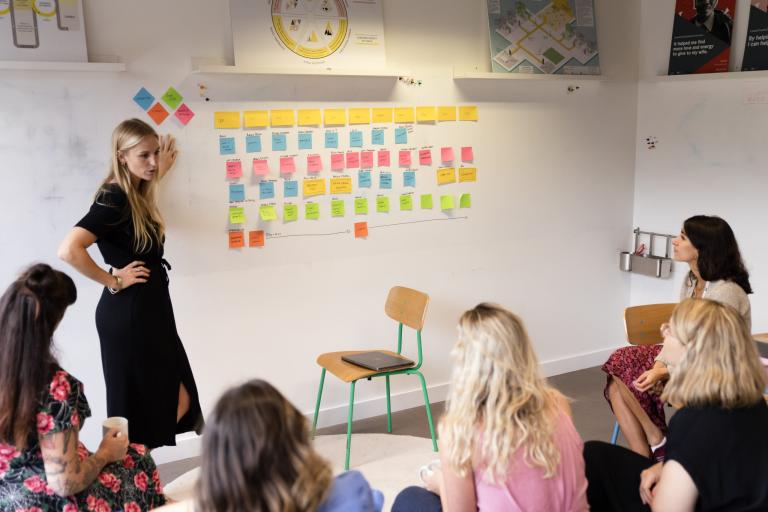Test, learn and grow
One important example is the test, learn and grow programme run by the Cabinet Office. These are place based public service reform experiments that are encouraged to:
- Crack on and try things out in practice
- Learn by doing
- Work in the open
- Do, don’t tell
- Iterate and adapt solutions
- Change the wiring in the system (including within Whitehall)
At a recent workshop in Whitehall, local places were invited to create high performing teams that are:
- Operationally led, rather than led by administrators or commissioners
- 100% dedicated to the project, rather than doing it in the margin for their day job
- Relentlessly focused on outcomes & service users; rather than inputs, activities, government directives or inspectors
- Supported by empowering leadership, rather than the dead hand of bureaucratic governance.
This is an energising and inspiring mix, combining changes in mindset, liberating local agency, empowering staff and communities and purposeful mission driven action. Much needed and much neglected during long years of austerity in local services. Nick Kimber, the Director in the Cabinet Office has recently written about the core principles that guide the #TestLearnAndGrow approach in government here.
Unblocking the system
However, there are reasons why this way of working is not normalised or routine in local public service all over the country. It is not because local public services are somehow luddite, or lacking in will; instead the reasons are to be found in how central government policies have structured the systems and incentives that shape behaviours.
Real change will only happen nationwide if these test, learn and grow projects push the boundaries of existing government policy, and experiment with alternative approaches to policy implementation, including changes to:
- Accountability and governance
- Funding and incentives
- Outcome measures, data collection and reporting
- Regulation and inspection
Easy to say, incredibly difficult to deliver in practice. Especially as most spending departments will resist the Cabinet Office’s enthusiasm to experiment on their territory.
So, we recommend the government resurrect the ‘power to innovate’ as a way of unblocking the systems, changing the relationships between central government and local public services, and creating some safe places to try out new ways of working locally.
A power to innovate creates a legal way of disapplying legislation for a fixed period of time, to enable experimentation. Local leaders apply to government ministers to use the power, making a case for why it would help, the benefits and risks, and what they want to learn. It is then for ministers to decide if the potential benefits outweigh the risks.
The ‘power to innovate’ in practice
In 2001 Innovation Unit was set up within the Department for Education to administer the ‘power to innovate’ for schools. This legal power was used a few hundred times to dis-apply legislation relating to a range of topics: school governance, governance of federations and networks of schools, the involvement of young people in school governance, the sessions of the school day, and universal free school breakfasts and lunches.
We learned three big lessons from administering this power:
- It symbolised a new relationship between schools and government with new expectations that schools were important agents of change, and the government was prepared to change itself in order to enable and facilitate innovation
- It informed policy on a much wider scale – although the power was used a relatively small number of times, it prompted thousands of enquiries and discussions between schools and government about what schools wanted to change and how they wanted to change
- It revealed that legislation was sometimes a perceived rather than a real barrier to change – many things that schools thought they were legally prohibited from doing, were actually the product of a compliance mindset, propped up by rules and expectations generated by school governing bodies, headteachers, unions, local authorities, civil servants and inspectors.
Looking back now, the power to innovate for schools was probably a missed opportunity to dis-apply legislation in ways that led to the real transformation of the whole school system. If we could have our time again, we would use the power to innovate to experiment with how schools are inspected and regulated, how they were funded and incentivised, how student learning and progress was assessed, how the curriculum is structured and developed, and how overall school performance is measured. After all, we are at our best, when we are at our boldest. Now, this government has the need and the opportunity to do something bolder and on a much larger scale. We hope they have the courage to do it.
If you wish you could use a new ‘power to innovate’ to dis-apply legislation temporarily, so that you could fundamentally change the way local services deliver better outcomes, reduce inequalities, and improve value of money then get in touch. Together we can make a stronger case for change.
Share this page





